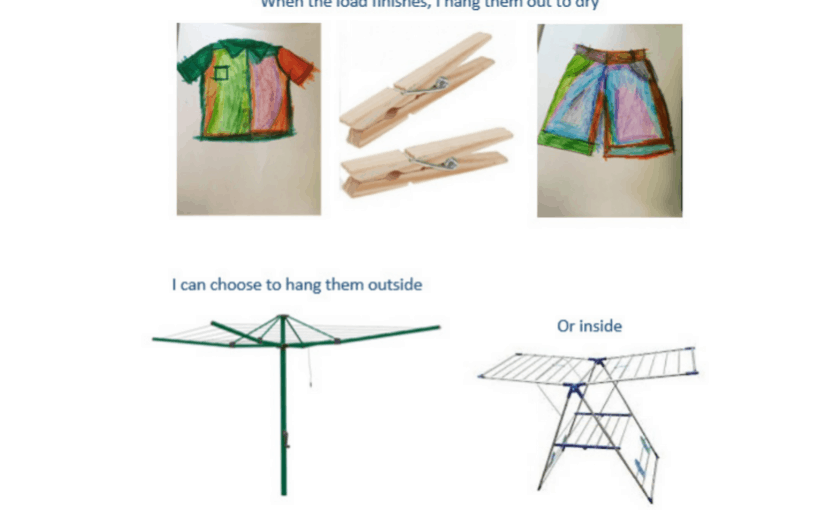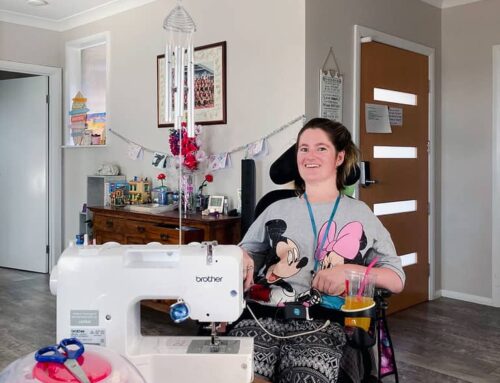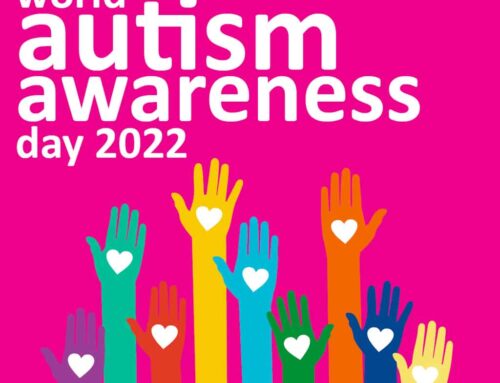Outcomes for two men with intellectual disability following communication support training for their workers.
Authors: Meg Irwin & Tara Sheridan
Abstract
For many people with intellectual disability, successful participation is restricted by inadequate or inappropriate communication support. In Central Victoria, the local Communication Access Network service convenes and trains a network of disability support workers in advanced communication support skills. This paper outlines the positive communication and participation outcomes for two men with intellectual disability and complex communication needs after their support workers joined the Network.
Introduction
Studies in the UK indicate that up to 90% of adults with intellectual disabilities have some form of communication difficulties, with half having severe difficulties. 80% of people with severe learning disabilities never acquire an effective communication system (Baker, 2010, p.11). In Australia in 2003, 3% of the population had intellectual disabilities and almost 60% of those had severe communication limitations. (AIHW, 2008). We look at the communication and participation outcomes for two men with intellectual disabilities and complex communication needs when two of their disability support workers trained as Communication Facilitators with the Southern Loddon Mallee Regional Communication Service (SLMRCS).
The Southern Loddon Mallee Regional Communication Service, auspiced by Bendigo Health and funded by the Victorian Department of Health and Human Services (DHHS), is part of the state wide Communication Access Network (Johnson, Solarsh, Bloomberg & West, 2016). Communication Facilitators are disability support workers trained by the SLMRCS speech pathologist to provide and promote skilled person-centred communication support. They may collaborate between their services to support each person with a communication disability across his or her various environments. Since 2006, the SLMRCS has convened, trained and supported the Communication Coordinator and Facilitator Network. Disability services involved in the Network include approximately 18 DHHS group homes, and 8 large disability funded organisations across approximately 20 sites in the region. (Communication Access Network, 2018).
Communication Facilitators start with six days of training. After that, the SLMRCS convenes quarterly collaboration meetings, and provides site visits, whole service or other trainings or consultations, phone and email support, and a shared email list.
Prior to initial training, participants identify learning goals and needs. During the training, they evaluate their learning, do a weekly knowledge quiz, practice applying skills in their own services, and undertake and submit projects. Three months after completing the training, participants complete a questionnaire about the outcomes of their training for people they support.
Following the first course in 2018, Tara was enthusiastic about outcomes for two men she supported in their residential service. The SLMRCS invited Tara to collaborate on this paper about “Sam” and “Steve” (not their real names). Tara was a practice leader at Golden City Support Services (GCSS). GCSS provides services to people with disabilities, people recovering from mental illness, frail aged people, and people with dementia, through supported accommodation, respite, and home and community-based supports. GCSS has been a member of the Communication Coordinator and Facilitator Network since its inception, and actively supports their Communication Facilitators through an additional network within GCSS.
GCSS’s fundamental practice framework is its Five Bases of Support, built on elements of Person-Centred Active Support (Ashman, Beadle-Brown and Mansell, 2010) and Positive Behaviour Support (La Vigna, Willis and Donellan, 1989). The Five Bases are Communication, Engagement, Choice and Control, Predictability and Consistency, and Positive and Respectful Language. This framework informs all organisational policies, practice, staffing structure and employment strategies. Tara was already skilled in this approach, but she found that communication-specific training still improved outcomes.
Sam
Sam was a 45-year-old man with an intellectual disability, acquired brain injury, and obsessive-compulsive behaviours. They included requests to purchase new clothes, but reluctance to wear new or clean clothes; continuous checking, moving, or folding of clothes throughout the day, not washing his clothes, and refusing to bathe on average, every second day. At most, Sam would choose to wear clean clothes every second day. Staff could spend entire shifts folding clothes for him, or writing lists of new clothing requests. If Sam was not well supported to manage these behaviours, he might throw objects and cause property damage.
The accommodation service had introduced a skill development sheet so staff had consistent prompts to support Sam to bathe. This gave him more control by making his activities more predictable for him. When all fifteen staff followed the skill development sheet, Sam usually completed his routine. A year after the sheet was introduced, Sam would often show staff he had already independently bathed when they arrived. However, if he had high blood sugar levels or increased anxiety, this would not happen. Additionally, if staff did not know Sam well, they, themselves, could become anxious and, therefore, not deliver consistent prompts.
Two of Sam’s workers, one from his day support, and Tara from his accommodation service, did the six day training in early 2018. After the training, two new communication support interventions were introduced for Sam; a social story and consistent collaboration between the accommodation and day support Communication Facilitators.
The social story was developed to give Sam more control in his routine at home. It was about choosing clean clothes and washing clothes. It used positive and respectful language to confirm his right to make choices, and his ability to manage his clothing. It also affirmed that others saw Sam as handsome when he followed his routine.
The day support Communication Facilitator read the social story with Sam during the day. Reading the story away from home allowed him to process what he needed to do away from the place he needed to do it.
Two months after the social story was introduced, Sam was choosing to bathe, and was washing his clothes and wearing clean clothes daily. On a good day, he was requesting to purchase four to five new clothing items twice a day, and checking his clothing only once a day.
The two trained Communication Facilitators from Sam’s day support and accommodation service communicated daily; sharing information about what was happening for him, identifying what was working and what wasn’t, thus establishing consistent support across Sam’s main environments.
Tara believes a key impact of this collaboration was creating predictability for Sam:
“He trusts we are communicating with each other about what he needs. This can be informing him of a staffing change for the afternoon at home, or advising his day supports if he’s going to be away. This way he is reassured that everyone has the information they need to effectively support him.”
Holidays, when usual routines changed, had been a particularly stressful time of for Sam. With daily communication between the communication facilitators and use of the social story during normal non-holiday weeks, Sam had been more able to participate successfully in more activities he enjoyed. Tara explains the difference this made to holiday periods:
“The more engaged he is in his life, the more meaningful things he has in it, the less time he has to ask for stuff. When he comes to holidays, he is then happy to relax.”
There was also an increase in Sam’s verbal communication, which had previously been very limited. Tara describes the change:
“It was ‘yes’ or ‘no’ or ‘yup’. ‘Yup’ meant either ‘yes’ or ‘I don’t understand’. He will now ask ‘Hello, how are you today?’ and you say ‘Great thanks. How are you?’ He responds ‘Yup, good, I did this today’. He is actually having a full conversation. He’s using more words and his message is clearer. Staff don’t have to interpret as much. Now he is communicating more and feeling understood, we are seeing more of his personality. He jokes and sings and wants to share things with others.”
Furthermore, as Sam initiated more interaction and produced more verbal language, staff learnt more about how he processed information and how to support him effectively to do that. Mutual trust and successful interaction kept increasing.
Steve
Steve was a 42 year old man with autism and an intellectual disability. He did not speak. He understood some speech and could recognise photographs of places and people important to him. Steve was mostly happy to sit on the couch and not interact, perhaps occasionally going to the kitchen to ask for something.
Photo boards were already in place at Steve’s home. After the training, Tara prioritised time to ensure the boards continued to develop and that staff supported Steve to use them.
Steve’s photo board was a pin board with photos of him doing things in the community, such as buying lunch from the bakery, going to the supermarket, going to the pool, visiting his mum or his brother, or gardening at home.
After the training and the active implementation of the photo board, Tara describes the improvements:
“To start off, staff had to go into his bedroom and ask him to join them and say “What did you do?” and talk to him about it. You could tell by his body language, vocalisations and facial expressions that he was excited that we were standing there talking to him about something that he enjoyed. Now it’s got to a point that staff arrive and he takes them to the board rather than the other way around.”
“A lot of his communication needs to be interpreted by the other person. So now we have a really good tool to know what he actually likes doing, which opens opportunity for him to make choices in the future and for him to make decisions and have more control in his life.”
A regional network convened, trained and supported by the local Communication Access Network speech pathologist since 2006, builds the capacity of disability support workers to provide effective communication support to people with complex communication needs.
These “communication facilitators” are provided with knowledge, skills, tools, resources, mentoring and collegial relationships to provide and promote good person-centred communication support, including appropriate communication aids and strategies.
Positive outcomes for people with intellectual disabilities and communication disabilities following initial training include; increased initiation, improved choice and control, increased participation in self-care and community activities, improved communication, and reduced challenging behaviour
Even support workers within an organisation committed to communication were able to achieve improved outcomes after training focusing specifically on communication.
References
Ashman , B., Beadle-Brown , J., Mansell, J. (2010). Top of Form
Person-centred Active Support: a Handbook. Hove, United Kingdom. Pavilion Publishing (Brighton) Ltd.
AIHW (Australian Institute of Health and Welfare). 2008. Disability in Australia: intellectual disability. Bulletin no. 67. Cat. No. AUS 110. Canberra:AIHW
Baker, V., Oldnall, L., Birkett, E., McCluskey, G. & Morris, J. (2010). Adults with learning disabilities (ALD). Royal College of Speech and Language Therapists position paper. London. Royal College of Speech and Language Therapy, 11
Communication Access Network. (2018). Southern Loddon Mallee Regional Communication Service Communication Coordinators Network, Communication Access Network. Retrieved from: https://www.communicationaccessnetwork.com/2018/06/21/southern-loddon-mallee-regional-communication-service/
Johnson, H., Solarsh, B., Bloomberg, K., West, D. (2016). Supporting people with complex communication needs through community capacity building: the Communication Access Network. Tizard Learning Disability Review. 21(3). pp.130-139
La Vigna, G.W., Willis, T.J., Donellan, A.M. (1989). The role of positive programming in Behavioural treatment. In Cipanni, E. (Ed.) The treatment of severe behaviour disorders Behaviour Analysis approaches. Monographs of the American Association on Mental Retardation (12). San Francisco: American Association on Mental Retardation




